Electronic to Photonic Devices
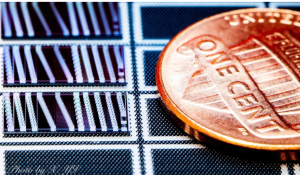
Solid state devices are semiconductor and superconductor-based electronics such as transistors and diodes used as the heart of integrated circuits for storing and processing information. Many solid-state devices are used in optoelectronics for sensing, generating, and manipulating light. Others are used in energy applications to store and produce electricity from clean and renewable energy resources to address climate change and energy security.
This focus path emphasizes both the foundation, characterization, and application of light, electricity, heat, energy conversion and storage, and energy efficiency as applied to large grid-scale and small portable and wearable electronics. This focus path discusses how advances in nanotechnology and low-dimensional, topological, quantum materials allow the design of smaller, faster, and more efficient nanoelectronics.
Gateway Courses
These courses are a good entry place for the electronic to photonic devices focus path
An applied physics course in electricity and magnetism, with emphasis on the technologies derived from them. An integrated lab component will provide team-based, hands-on examples and reviews of key concepts. Calculus 3 (Multivariable) may be taken concurrently; however, students should be proficient with vectors and calculus, including the chain rule and trigonometric functions.
Prerequisite: PHYS 1425 or PHYS 1420, and APMA 1110
Analyzes the basics of band theory and atomic structure; charge-transport in solids; current voltage characteristics of semiconductor devices, including p-n junction diodes, bipolar transistors, Schottky diodes, and insulated-gate field-effect transistors; electron emission; and superconductive devices.
Prerequisite: ECE 2300 (Applied circuits)
Analyzes the basic laws of electromagnetic theory, beginning with static electric and magnetic fields, and concluding with dynamic E&M fields; plane wave propagation in various media; Maxwell's Laws in differential and integral form; electrical properties of matter; transmission lines, waveguides, and elementary antennas.
Prerequisite: APMA 2130 (ODE) & ECE 2300 (Applied circuits)
Elective Courses:
Analyzes the principles of electromechanical energy conversion; three-phase circuit analysis; magnetic circuits and nonlinearity; transformers; electromagnetic sensing devices; DC, synchronous, stepper, and induction machines; equivalent circuit models; power electronic control of machines, switching regulators, Class D amplification. Laboratory, computer, and design exercises complement coverage of fundamental principles.
Prerequisite: ECE 2300 (Applied circuits) AND ECE 2200 (Applied Physics 2)
Co-requisite ECE 3251
This lab provides practical exposure and continuation of the topics covered in the lecture sections of ECE 3250. Topics include principles of measurement and analysis using computerized instrumentation.
Co-requisite ECE 3250
Quantum mechanics is one of the most important discoveries in the 20thcentury and has reshaped today’s science and technology. The rapid development in quantum computation and information is calling for a revolution in engineering and computation. Quantum information and quantum computing is fundamentally different from the classical computers. In order to understand how to build and use a quantum computer, we will review the birth of quantum mechanics and introduce the basic ideas and principles of quantum mechanics. The fundamental concepts in quantum information and computing, such as qubit, entanglement and squeezing, will be discussed. Finally, we will take a quick tour at the physics platform candidates for quantum computing implementation, and the IBM Q quantum computing resources.
Course objectives:
- To expose our students to the basic concepts and principles of quantum mechanics.
- To provide students with the tool to solve simple quantum problems using Schrödinger equation.
- To introduce the ideas and concepts of quantum computation and quantum information.
Note: The course will differentiate itself from the Quantum Mechanics course (PHY 3650, 3660) taught in Physics department. We will not explore the contents where nontrivial mathematical formalism, such as complex Hilbert space, are required. Contents that are physics oriented will be avoided as well, such as identical particle statistics, the variational principle, the WKB approximation, scattering and partial wave analysis.
This class discusses solid state devices that are used for renewable energy application. While we will provide a general overview of most new and interesting technologies via lectures, discussions, and research presentations, we will focus on the detailed technical aspects of few devices namely: solar cells, thermionic devices, thermoelectric devices, solar thermal (CSPs), and batteries.
Design and analysis of wireless communication circuits. Topics covered include transmission lines, antennas, filters, amplifiers, mixers, noise, and modulation techniques. The course is built around a semester long design project.
Prerequisite ECE 2700 (Signals and Systems)
Description: The course covers photonic devices used in today’s fiber optic communication systems from a practical point of view. Its goal is to help students understand both, principles and advanced designs, such that device operation and performance can be understood and analyzed in the context of modern communication systems. The course briefly revisits fundamentals including photon interactions with matter and semiconductor junction devices.
Topics include: Lasers and modulation, electro-absorption modulator, Mach-Zehnder modulator, optical amplifiers, devices for filtering and switching, optical receivers for direct and coherent detection, photonic integrated circuits, component packaging, devices for 100G long-haul and Terabit-system.
Prerequisites: open to senior undergraduate or graduate students, courses on device physics and signals & systems (ECE 3103 and ECE 2700) recommended.
Explores fabrication technologies for the manufacture of integrated circuits and microsystems. Emphasizes processes used for monolithic silicon-based systems and basic technologies for compound material devices. Topics include crystal properties and growth, Miller indices, Czochralski growth, impurity diffusion, concentration profiles, silicon oxidation, oxide growth kinetics, local oxidation, ion implantation, crystal annealing, photolithography and pattern transfer, wet and dry etching processes, anisotropic etches, plasma etching, reactive ion etching, plasma ashing, chemical vapor deposition and epitaxy; evaporation, sputtering, thin film evaluation, chemical-mechanical polishing, multilevel metal, device contacts, rapid thermal annealing, trench isolation, process integration, and wafer yield.
Prerequisite: ECE 3103 or equivalent.
Topics include the determination of semiconductor material parameters: crystal orientation, type, resistivity, layer thickness, and majority carrier concentration; silicon device fabrication and analysis techniques: thermal oxidation, oxide masking, solid state diffusion of intentional impurities, metal electrode evaporation, layer thickness determination by surface profiling and optical interferometer; MOS transistor design and fabrication using the above techniques, characterization, and verification of design models used.
Corequisite: ECE 5150.
Design and analysis of passive microwave circuits. Topics include transmission lines, electromagnetic field theory, waveguides, microwave network analysis and signal flow graphs, impedance matching and tuning, resonators, power dividers and directional couplers, and microwave filters.
Prerequisite: ECE 2600 Electronics or instructor permission.
Analyzes the measurement and behavior of high-frequency circuits and components; equivalent circuit models for lumped elements; measurement of standing waves, power, and frequency; use of vector network analyzers and spectrum analyzers; and computer-aided design, fabrication, and characterization of microstrip circuits.
Corequisite: ECE 5260 or instructor permission.
Solar energy plays an important role in the growth of renewable energy which will have an important impact on society to meet its energy needs and improvement of environmental quality. This course provides an introduction to Photovoltaics and solar energy generation and gives an overview on the subject. The course will describe the operation of photovoltaic cells and efficiency improvements, industrial processes, solar thermal power generation, thin films, and nanomaterials for photovoltaics and future technologies.
The photovoltaics class is a one-semester course designed to provide a fundamental understanding of the subject of photovoltaics and solar energy. Topics that will be covered include basic principles of photovoltaics, operation of a solar cell, light absorption, charge generation and transport, p-n junctions, photovoltaic device design, fabrication and applications, optical and electronic losses, design of high-efficiency solar cells, light trapping structures, solar cell device measurements, industrial solar cells, organic solar cells, thin film solar cells, nanomaterials for solar cells, PV systems, solar concentrators, solar thermal power generation, and future prospects of photovoltaic and solar energy technology. The class will also have three laboratory sessions to provide students with hands-on experience in solar cell fabrication, characterization, and organic materials for solar cells. The class may also have one or two guest lectures to share their practical experience in the photovoltaics and solar energy area. Students taking the class at the 6000 level will be required to prepare and present an additional term paper.
Prerequisites: A background in engineering, physics, or chemistry, and a student who has completed the undergraduate ECE requirements for physics and math. The course is intended for undergraduate and graduate students.
Undergraduate students are welcomed and encouraged to take this course! Solar energy is an important renewable energy source and is a fast-growing area, providing many opportunities for good jobs.
What our students say ECE 5260: MICROWAVE ENGINEERING
"The microwave engineering class is the most exciting, interesting, and intensive class that I've taken at UVA. High-frequency circuit effects are among the more confusing concepts for me - I have no regular interaction with them - so getting to play with the simulators and test my designs in the lab (especially when we tried to correct our designs for parasitics) was really rewarding. Microwave lab is where transmission lines first started to make intuitive sense, instead of just being mathematical constructs. It was a wild ride, but I have never learned so much in a single class. I felt like every day I would come out of lecture somewhat bewildered by the complexity of it all, but the quick reinforcement from homework and lab designs would always clear things up." - John Berberian, Class of 2025
Some faculty in this area:
You are likely to see these faculty as the instructors for elective courses. Click on a name to visit a website and read about the cool research being done in this area at UVA!
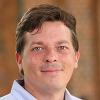
Andreas Beling
Andreas Beling earned his M.Sc. from the University of Bonn in 2000 and Ph.D. from Technical University Berlin in 2006. He worked at Heinrich-Hertz-Institut and UVa, gaining industry experience in fiber optic communication systems. Beling authored 230+ papers, 3 chapters, and holds 4 patents. Senior member of OSA and IEEE.
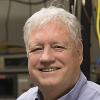
Joe Charles Campbell
Joe Campbell received a B.S. Degree in Physics for the University of Texas at Austin in 1969, and M.S. and Ph.D. degrees in Physics from the University of Illinois at Urbana-Champaign in 1971 and 1973. Professor Campbell teaches courses on lasers and optoelectronic components. In 2002 Professor was inducted into the National Academy of Engineering.
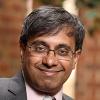
Avik Ghosh
Avik Ghosh is Professor of Electrical and Computer Engineering and Professor of Physics at the University of Virginia. He has over 100 refereed papers and book chapters and 2 upcoming books in the areas of computational nano-electronics and low power devices.
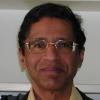
Mool C. Gupta
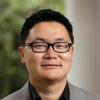
Kyusang Lee
Kyusang Lee is currently an Associate Professor of Electrical and Computer Engineering and Materials Science and Engineering departments at University of Virginia. He received his B.S. degree from Korea University in 2005, M.S. degree from Johns Hopkins University in 2009, and Ph.D. degree from University of Michigan in 2014, all in Electrical Engi
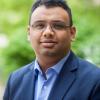
Nikhil Shukla
Nikhil Shukla is an Associate Professor at the University of Virginia with a joint appointment in the ECE and the Materials Science and Engineering department.
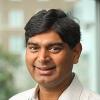
Nathan Swami
Nathan Swami is a Professor of Electrical & Computer Engineering at the University of Virginia, Charlottesville, VA.
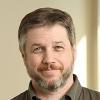
Robert M. Weikle, II
Bobby Weikle's research focuses on millimeter-wave and terahertz electronics, applied electromagnetics, integrated antennas, novel high-speed devices and low-noise sensors for applications ranging from astronomy and spectroscopic sensing to metrology.
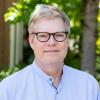
Keith Williams
Williams' completed my Ph.D. in materials physics at Penn State University in 2001, and undertook postdoctoral research in the Molecular Biophysics Group at the Delft University of Technology in the Netherlands, thereafter establishing a nanophysics laboratory in the physics department at the University of Virginia.
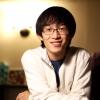
Xu Yi
Dr. Yi’s research is focused on quantum and classical applications of integrated photonics through leveraging optical resonators and optical frequency combs.
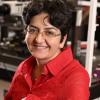
Mona Zebarjadi
Mona Zebarjadi is a joint professor of Electrical and Computer Engineering and Materials Science and Engineering Departments at the University of Virginia, where she is leading the Energy Science and Nanotechnology Lab (ESnail).
